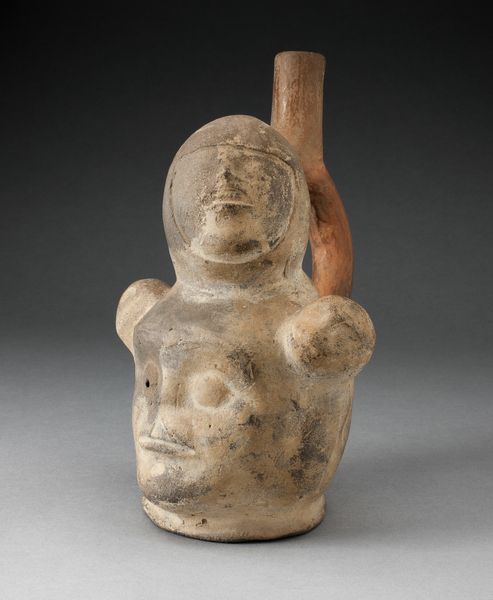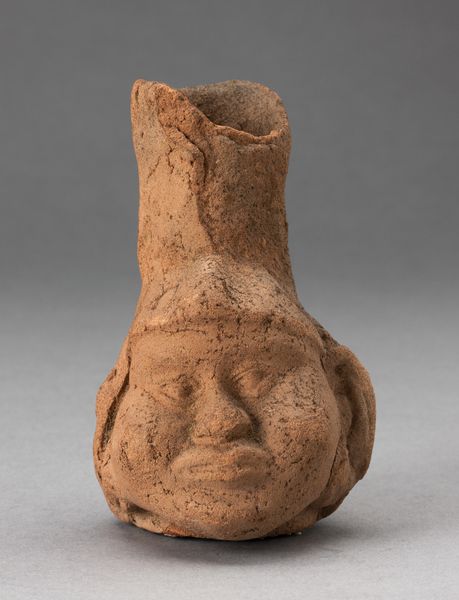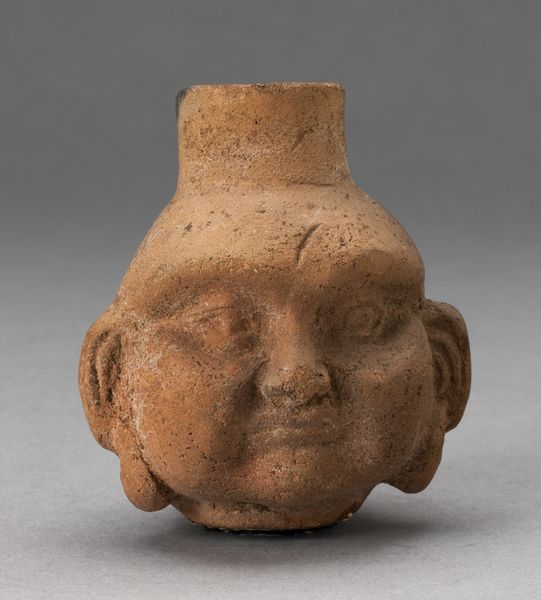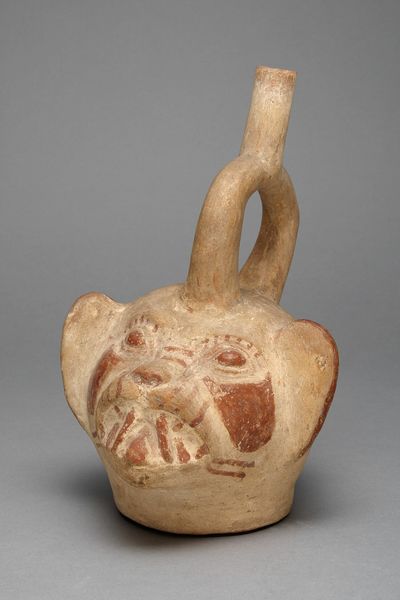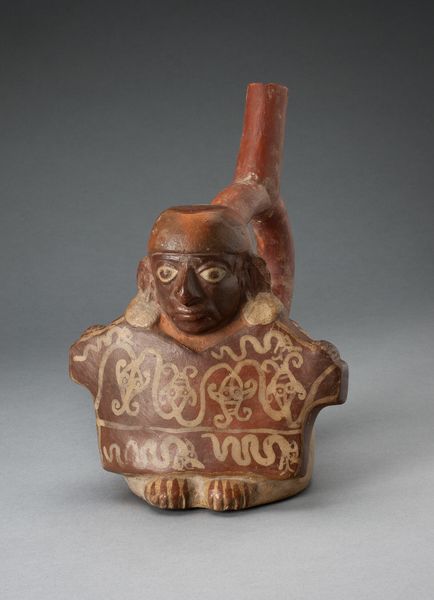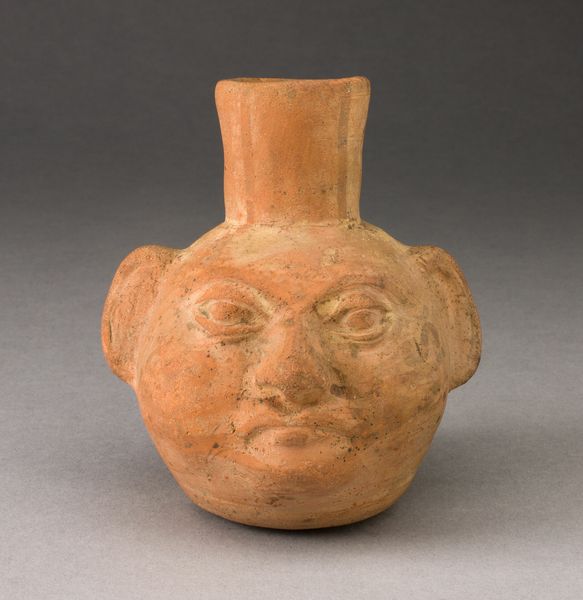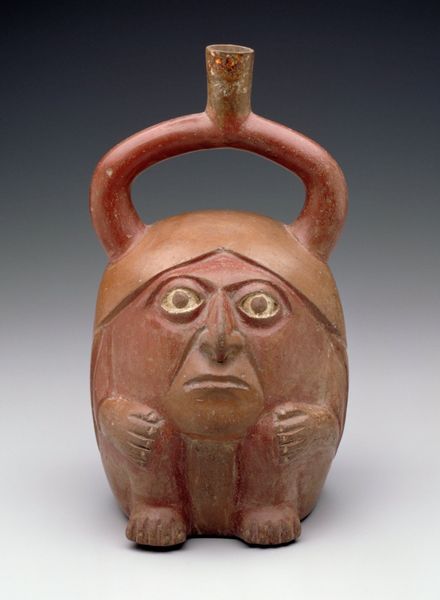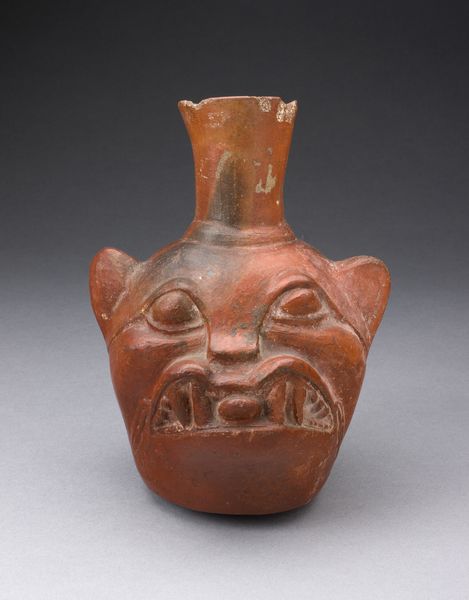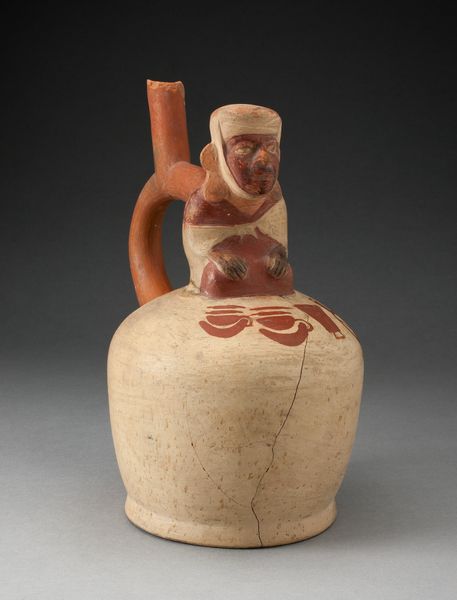
ceramic, terracotta
#
portrait
#
ceramic
#
figuration
#
terracotta
#
indigenous-americas
Dimensions: H. 22.2 cm (8 3/4 in.)
Copyright: Public Domain
Curator: Let’s turn our attention to this "Portrait Vessel of a Ruler with Large Cheeks," crafted sometime between 100 and 500 by the Moche people. It’s part of the collection here at the Art Institute of Chicago. What's your first reaction? Editor: Intriguing. It's earthen, definitely gives you a sense of ancient processes. It also appears surprisingly modern; I am immediately thinking about the artist’s choices and methods, the physical labor of extraction, preparation, shaping, and firing the clay... It grounds the figure even while its stylized representation tends to flatten it out. Curator: That's a compelling point. The bulbous form topped with the stirrup spout, it evokes associations with fertility and ritual. In the Moche culture, these vessels held significant symbolic weight. Water, often poured through the spout, connects it to notions of life and sustenance. I find myself thinking of it as both earthly and of the gods. Editor: It definitely has a tangible earthiness, the clay looks very roughly handled. The modeling is wonderfully sensitive. But tell me more about the Moche workshops. What sort of social organization did it require? I mean, just considering how many of these have survived…it clearly demanded sophisticated and highly efficient labor. Curator: Undoubtedly. Moche society was complex and stratified. These vessels were typically mold-made for wider access, though this example looks like it could have been handmade or used a press-mold technique which were generally reserved for higher status figures and imagery. So that would lend weight to it representing an actual ruler. It makes one wonder about the elite, power dynamics in shaping cultural memory and beliefs. Editor: Absolutely, you have to consider the economics. So the molds economized production, while the possible handcrafting added value to the representation of an elite individual and simultaneously signaled that power. These "Portraits" must have circulated strategically, functioning simultaneously as art objects, commodities, and status symbols. Curator: Indeed, the visual language used on pottery can illuminate what roles were emphasized. Note, the man's large cheeks may refer to his life-giving power and capacity, possibly including his erotic power to engender future descendants. Editor: Well, it looks as though both social practice and highly organized labor meet at this point. What better representation than a well-produced, materially complex artwork that symbolizes power so potently? Curator: Agreed. Reflecting on it, I’m fascinated how one object manages to be functional and profoundly symbolic. Editor: For me, seeing the vessel as both object and symbol reveals some important facets of Moche societal priorities, allowing us to understand it better.
Comments
No comments
Be the first to comment and join the conversation on the ultimate creative platform.
